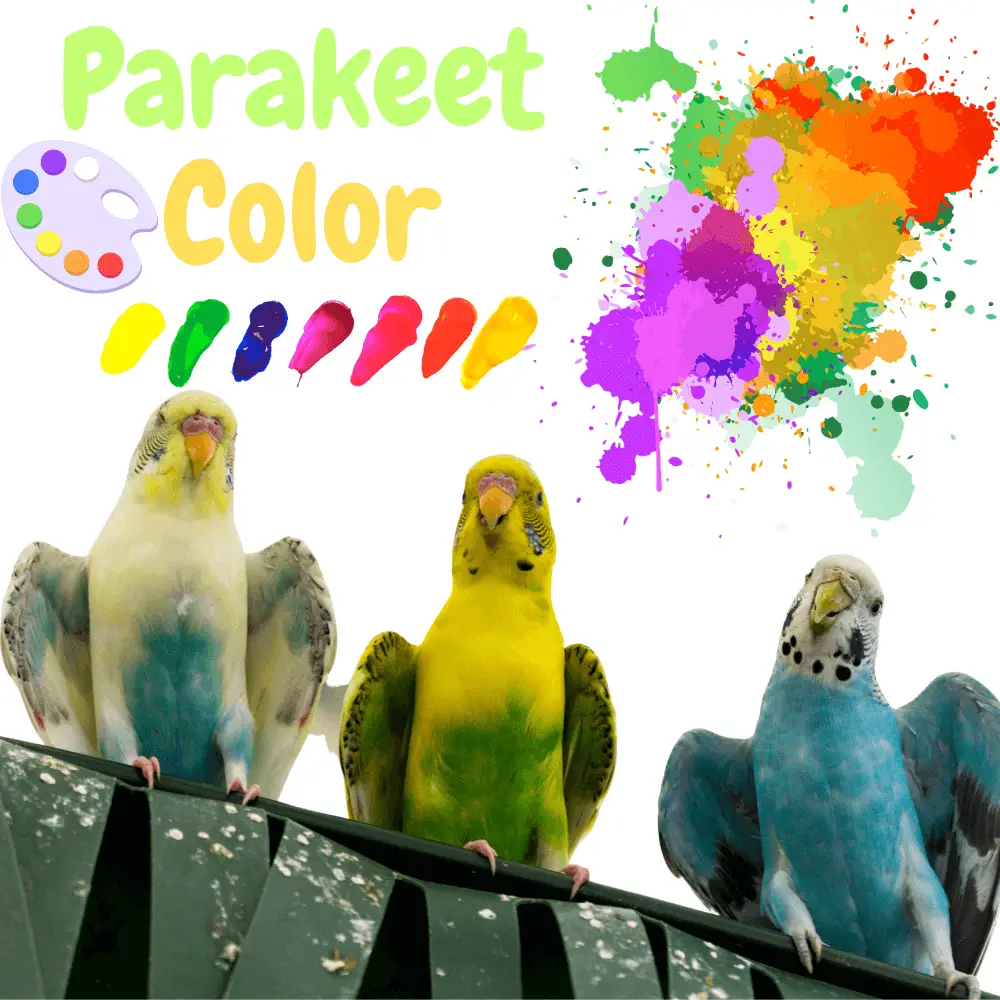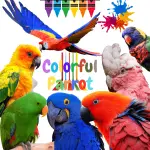
Parakeet Color: The color rows of budgerigars are subject to a simple basis, which causes a wide variety of colors in budgerigars. There are only two color rows in budgerigars, which are based on green and blue.
The individual mutations and their combination of colors are now referred to as color strikes.
The spring consists of a long, fixed quill, a central shaft, and a spring plume. Branches (feather branches) start from the spring shaft.
From the feather branches, in turn, arc rays and hook rays emanate, which are intertwined. Just imagine a tree where branches emanate from the trunk and branches from the branches.
The light rays now fall on the structure of the spring and are refracted or reflected differently, whereby some light waves are absorbed.
Around 80 color strokes are known today. Many color varieties are known only among breeders because they are very rare.
Bird owners like the variety of colors and intense colors, which is why color budgerigars are very popular. Almost every taste can be satisfied.
Parakeet Color

The basic colors of budgerigars
The green row and the blue row are divided into three different color levels: light, medium, and dark. In conjunction with the color series and the color level, there are sometimes 6 different colors that a budgie can have.
| Color level | Green row | Blue Series | ||
| Bright | Light green | Light blue | ||
| Medium | Dark green | Dark blue | ||
| Dark | Olive | Mauve |
Wild budgerigars belong to the green row. The plumage color on the back and belly of the budgerigars are green, exceptions are the spots.
In addition, the gray-green and the lutinos belong to this color series. The face of the budgerigar is yellow with a black or brown (cinnamon) wavy pattern and the tail feathers are usually dark blue (shimmering) or dark green.
The row of blue-colored budgerigars, the blue row, includes the grays and the albinos.
| Grey-green | Violet | ||
| Lutino | Grey |
In the blue row, the budgerigars lack the yellow plumage dye, white and blue then compose in different shades.
What makes the feathers colorful in the budgie?
Colors are nothing more than the individual visual perception that makes things colored by dye particles and light. Color perception depends on the nature of the eye and the sensitivity of the receptors, as well as the property of the object (structure).
In short, it is a subjective, visual sensory perception. Whereby we have very limited perception and budgerigars perceive colors much better.
To get to the color of the feathers, you have to imagine a rainbow. This shines when the waves of light collide with individual water droplets and refract the light differently.
The color of the feathers in the budgerigar is produced by dye particles and the structure.
Each feather of a bird has the same structure and a long evolutionary history. Decisive for the plumage color is the contour of feathers. These springs are divided into:
- Body feathers (Pennae conturae generales): the cover feathers of the trunk
- Flysprings (Remiges): the wing on hand wings and arm wings
- Control feathers (rectrices): the tail feathers
- Tectrices: the remaining feathers on the wings and tail.
Parakeet Color

The spring consists of a long, fixed quill, a central shaft, and a spring plume. Branches (feather branches) start from the spring shaft.
From the feather branches, in turn, arc rays and hook rays emanate, which are intertwined. Just imagine a tree where branches emanate from the trunk and branches from the branches.
The light rays now fall on the structure of the spring and are refracted or reflected differently, whereby some light waves are absorbed.
| Green | Result of the colors yellow & blue – the bark of the arc ray contains a yellowish dye and the middle area a blue. |
| Blue | The bark is colorless and the air bubble zone divides the light into its spectral colors. At its core, the melanin absorbs all colors except blue. |
| White | There is no color in the horn structure of the feather |
| Yellow | With yellow plumage, the core is colorless, the light reflects the yellow dye of the bark |
| Black | Bark and core have a lot of melanin, the yellow dye is completely missing |
When did the first color rows come?
For us, it is normal to look at budgerigars of different colors, but there were actually only budgerigars of the green row. After Gould brought the first budgerigars to Europe in 1840, experiments were already carried out on the color of budgerigars by means of mutations.
Already in 1864, there were the first yellow budgerigars. In the same year, there are said to have been the first white budgerigars. You can imagine that the first color strokes at exhibitions achieved a high price and the breeder enjoyed a high reputation.
It was not until 1881 that blue budgerigars appeared. They are said to have been bred as early as 1878 from budgerigars of the green row. However, it is known that this first blue budgerigar is the reason for today’s variety of colors and color variations of budgerigars.
Are there red budgerigars?
Today, all budgerigar owners know that there will never be a red budgie. However, we owe this knowledge to the breeders of the past. It was the wish of many breeders to breed a red budgie.
However, the budgerigar lacks the red factor. Since the budgerigar is not systematically closely related to any other species, no red can be crossed.
Crossbreeding experiments with Bourke parakeets did not produce a new color series of budgerigars.
Budgie Color and Mutation
SOURCE: Alen AxP




















